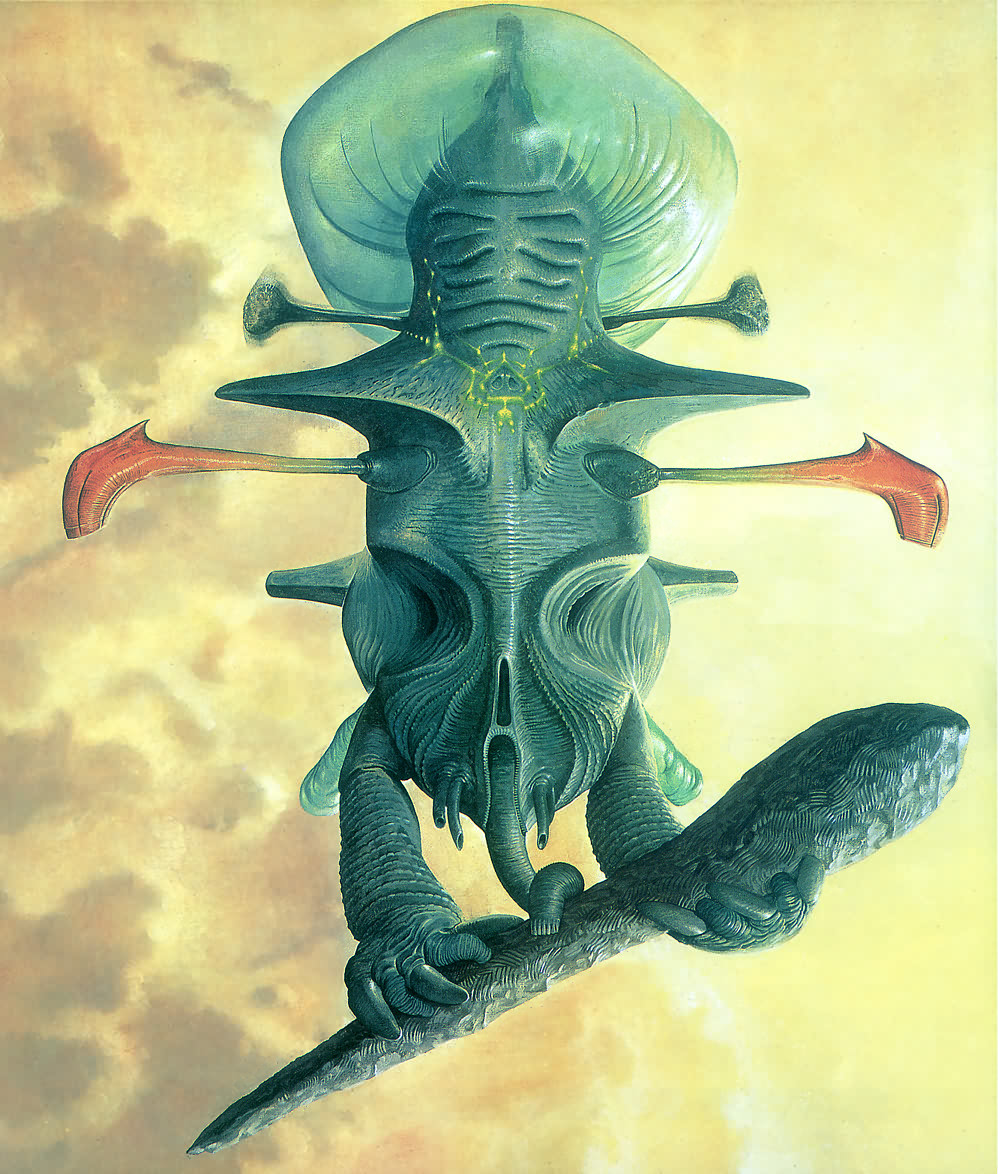


I really wanted this creature to be big and threatening, my version of what might have evolved along T-rex lines on another planet.

It is believed that the creature emits its ranging pings in concert with the electrophytes’ discharges, a habit that probably obscures its point of origin from prey animals. Bearing an enormous darting tongue, this aggressive liquivore was frequently spotted by expedition-members concealing itself amongst the electrophyte beds, taking advantage of those colonial animals’ electrical discharges to discourage the herds from approaching too closely. A mostly solitary hunter, the arrival of its dark form upon the plains presages a short and furious pursuit almost always ending in the death of some hapless Thornback, Prismalope or Littoralope. The Skewers were always meant to be something of a deus ex machina, descending nearly unseen from heaven to lift off some pathetic animal, only to vanish as quickly as they appeared.ĪRROWTONGUE – The Arrowtongue is one of Darwin IV’s most ubiquitous alpha predators. It was an early idea to do an aerial painting – a tip of my hat to all the aviation art I enjoy so much. I really like the shapes and patterns on orcas and that admiration found its way into this piece. One can find the shriveled husks of Skewer victims virtually everywhere upon Darwin’s surface. Bearing a huge, curved nasal-lance, they are almost playful in their methods of dispatching prey tossing their victims in mid-air from one to another until it is completely drained of fluids. Traveling in mated pairs or, less frequently, in small, flying pods upon the planet’s strong air-currents these predators are found from pole to pole. Even the feared Arrowtongues are vulnerable to its swooping attacks. SKEWER – There is no predator more potent upon Darwin IV than the sleek and wide-ranging Skewers. Sent along as the mission’s artist, Barlowe describes his ‘excursions’ to survey Darwin IV and the unusual animals he encountered: creatures like the monopodalians, who pogo-stick across a barren, icy landscape, or the winged but flightless Stripewings that are in “evolutionary flux.” Numerous “observed” details, such as the length of a Darwinian day (26.7 hours) and the feeding, hunting and mating behaviors of various creatures, help maintain the illusion of realism and immediacy such a first-person narrative demands.” ~ Publishers Weekly “An abundance of lavish full-color illustrations and detailed black-and-white sketches dominate Barlowe’s fictional account of a 21st-century exploratory space flight to the imaginary planet Darwin IV. BEING AN ACCOUNT IN WORDS AND ARTWORK OF THE 2358 A.D.


 0 kommentar(er)
0 kommentar(er)
